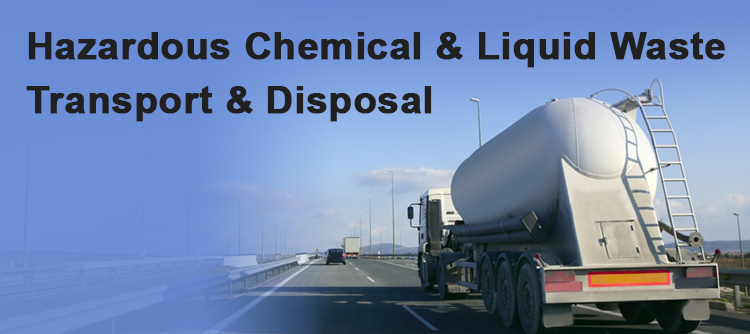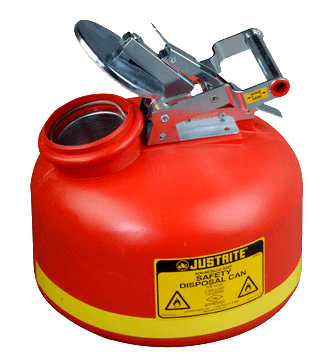Leading Industrial Wastewater Treatment Solutions: Making Certain Conformity and Performance
Leading Industrial Wastewater Treatment Solutions: Making Certain Conformity and Performance
Blog Article
Comprehending the Comprehensive Process of Liquid Waste Disposal: Best Practices and Environmental Effect Considerations
The management of fluid waste disposal is a complex problem that needs a comprehensive understanding of different ideal techniques and their linked ecological impacts. From the types of liquid waste created to the methods utilized for collection, therapy, and final disposal, each step plays a crucial duty in protecting communities and public health.
Kinds Of Liquid Waste
Recognizing the various kinds of liquid waste is essential for efficient management and disposal practices. Liquid waste can be broadly classified into numerous types, each calling for one-of-a-kind handling and therapy strategies.
Industrial liquid waste frequently contains harmful products, including heavy metals, solvents, and chemicals, produced during making processes. These wastes require stringent regulatory compliance to safeguard human health and wellness and the environment. Residential fluid waste mostly describes wastewater produced from households, including sewage and greywater, which, although less harmful, can still position considerable dangers if incorrectly handled.
Agricultural liquid waste, including runoff from farms, commonly includes fertilizers and pesticides that can lead to ecological degradation if not treated effectively. Medical liquid waste, produced from healthcare facilities, consists of infected fluids such as bodily liquids and chemicals, needing specialized disposal approaches to avoid infection and environmental contamination.
Lastly, oil and grease waste, normally created by restaurants and vehicle markets, can cause extreme clogs in sewer systems otherwise handled effectively. Comprehending these categories facilitates targeted approaches for treatment, conformity with laws, and reliable disposal approaches, eventually promoting ecological sustainability and public health and wellness safety.

Collection Approaches
Effective collection approaches are crucial for the appropriate management of liquid waste, ensuring that it is collected safely and efficiently before therapy or disposal. Numerous methods are utilized depending on the kind of liquid waste generated, the quantity, and the specific attributes of the waste.
One common method is making use of specialized collection tanks or sumps, which are designed to record liquid waste at the resource. These systems often integrate pumps that help with the transfer of waste to bigger storage containers or treatment facilities. Furthermore, mobile collection devices equipped with vacuum cleaner modern technology are utilized in situations where waste is generated periodically or in hard-to-reach places.
For commercial setups, closed-loop systems can effectively reduce leaks and spills, permitting the recovery and reuse of liquid waste. It is likewise vital to educate employees on correct collection protocols to reduce dangers connected with unsafe substances.
Additionally, applying regular maintenance routines for collection equipment ensures optimum efficiency and safety and security. The assimilation of innovative tracking systems can enhance collection efficiency by offering real-time information on waste degrees and possible hazards. Overall, effective collection methods are fundamental to lasting liquid waste monitoring methods.
Treatment Procedures
Therapy procedures play an essential role in the administration of liquid waste, transforming possibly harmful materials into safe effluents or recyclable resources - liquid waste disposal. These procedures can be broadly classified into physical, chemical, and biological methods, each tailored to attend to details impurities present in the waste stream
Physical therapy techniques, such as sedimentation and filtration, job by removing suspended solids and particulate matter. These techniques are typically the initial step in the therapy chain, properly minimizing the load on subsequent procedures. Chemical therapies involve using reagents to reduce the effects of dangerous compounds, speed up hefty metals, or oxidize organic contaminants, therefore improving the security of the effluent.
Biological treatment processes, including triggered sludge systems and anaerobic additional info digestion, maximize the natural capabilities of microbes to break down raw material. These methods are specifically efficient for wastewater including biodegradable pollutants. Advanced treatment technologies, such as membrane layer filtration and progressed oxidation processes, are increasingly used to attain higher levels of purification.
Including a combination of these treatment approaches not just ensures conformity with regulative requirements but likewise advertises ecological sustainability by recovering valuable sources from fluid waste.
Disposal Options
Just how can companies ensure the responsible and secure disposal of liquid waste? Effective disposal choices are crucial for safeguarding public health and the setting. The key methods consist of land incineration, disposal, and therapy complied with by discharge right into local wastewater systems.
Land disposal entails the careful control of fluid waste in designated garbage dumps, ensuring that it does not seep right into bordering soil or water. Incineration, on the other hand, subjects liquid waste to heats, converting it into ash and gases, which require correct filtering to reduce discharges. This approach appropriates for unsafe wastes that can not be dealt with with conventional ways.
In cases where liquid waste can be treated, organizations may opt for organic or chemical treatment procedures to neutralize damaging components prior to releasing the dealt with effluent right into local systems. This route commonly lines up with regulative requirements, making certain that the effluent satisfies security standards.
Inevitably, companies have anchor to conduct complete analyses of each disposal alternative to identify its feasibility, taking into consideration factors such as waste make-up, governing compliance, and potential threats to health and wellness and the environment. By choosing proper disposal approaches, organizations can add to a liable waste monitoring method.
Environmental Impact
The ecological impact of fluid waste disposal is a vital factor to consider for companies looking for to minimize their ecological footprint. Additionally, the discharge of without treatment or inadequately treated waste into surface area waters can result in eutrophication, leading to oxygen depletion and the succeeding fatality of fish and other organisms.

To reduce these effects, organizations need to adopt best techniques such as carrying out strenuous waste therapy procedures, promoting recycling and reuse, and adhering to regulatory requirements. By taking a proactive method to liquid waste management, entities can dramatically lower their ecological footprint while sustaining sustainable advancement goals. Inevitably, a detailed understanding of the environmental impacts related to fluid waste disposal is important for educated decision-making and responsible stewardship of natural deposits.
Conclusion
Efficient administration of fluid waste is critical for safeguarding ecological integrity and public health and wellness. By embracing best techniques in collection, disposal, and therapy, together with adherence to regulative criteria, the capacity for unsafe contamination of ecosystems can be dramatically minimized. Continual advancements in technology and processes contribute to lasting waste monitoring initiatives. Inevitably, an extensive understanding of liquid garbage disposal not just alleviates environmental influences but also promotes a dedication to liable resource administration and environmental stewardship.
The administration of liquid waste disposal is a complex issue that calls for a thorough understanding of numerous finest methods and their connected environmental effects. From the kinds of fluid waste created to the approaches employed for collection, therapy, and last disposal, each action plays a crucial function in guarding ecological communities and public health and wellness.The environmental effect of fluid waste disposal is a critical consideration for companies looking for to lessen their environmental impact. Inevitably, a comprehensive understanding of the environmental effects linked with fluid waste disposal is crucial for informed decision-making and accountable stewardship of all-natural sources.
Inevitably, visit homepage a thorough understanding of fluid waste disposal not only minimizes ecological impacts however likewise fosters a commitment to responsible resource monitoring and ecological stewardship.
Report this page